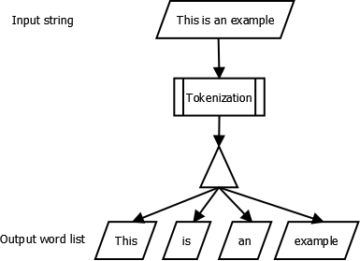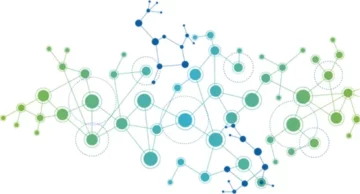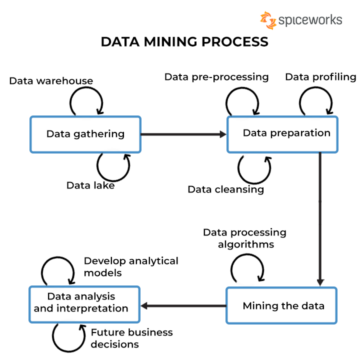Introduction
Imagine a walking machine doing all your work, from household chores to flipping wooden logs in a factory. It would be fascinating, right? It is possible today with an AGI Robot.
When it comes to reliability, these AGI robots’ unique ability to learn and adapt to individual preferences and routines makes them not just companions but indispensable aids in our daily lives.
In a recent development, OpenAI introduced its NEW ‘AGI’ Robot Figure 1, the most amazing thing I have seen this year. This AGI robot demo by OpenAI has undoubtedly shaken the industry. In this latest demo, the instructor asked, “Hey, Figure 1, what do you see right now?” The response was, “Now I see a red apple on a plate in the center of the table, a drying rack with cups on a plate, and you standing nearby with your hand on the table.”
The speech-to-speech reasoning by the AGI robot was very accurate and fascinating. Sitting on my chair with EMO AI by my side, I almost tripped. Moreover, what we are experiencing right now in AI advancement is just the tip of the iceberg. There is a lot to explore in this field of AI and Robotics. In this exploration, I have curated 15 AI Robots by the mavens of the AI industry.
Read on!
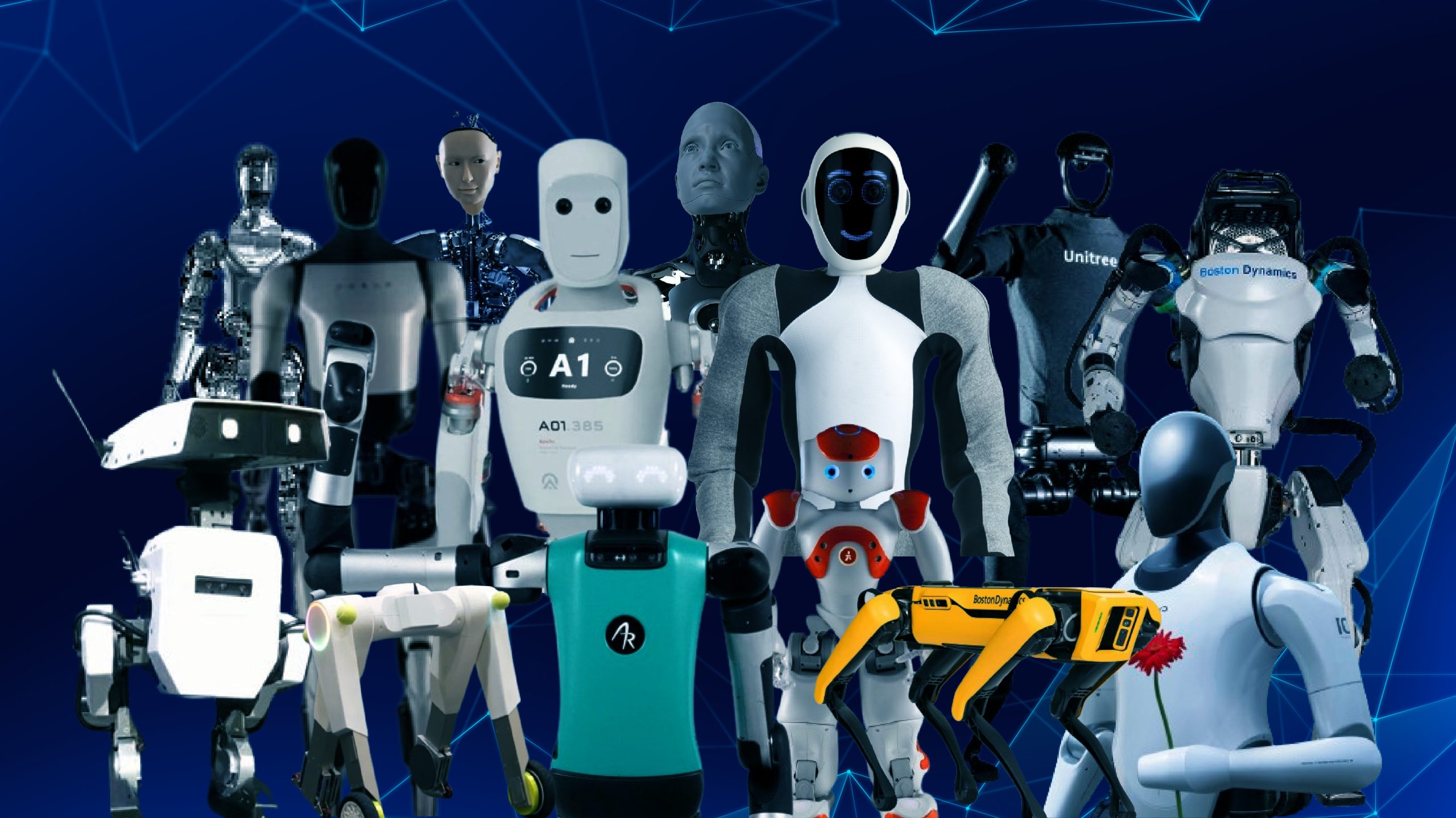
Table of contents
What is AGI Robot?
AGI stands for Artificial General Intelligence. It refers to the hypothetical future development of artificial intelligence systems that match or exceed human intelligence across various cognitive tasks and domains.
Currently, AI systems are narrow or specialized, meaning they are designed and trained to excel at specific tasks like playing chess, recognizing images, or understanding natural language. However, they lack the general, flexible intelligence that humans possess to learn, reason, and transfer knowledge across vastly different problems and situations.
An AGI (Artificial General Intelligence) robot is an advanced form of artificial intelligence that aims to replicate human-like cognitive abilities. Unlike narrow AI systems that excel in specific tasks, AGI is designed to be generally smarter than humans and capable of performing a wide range of intellectual tasks.
Here are some key points about AGI robots:
- Mission and Purpose
- The mission of organizations like OpenAI is to ensure that AGI benefits all of humanity.
- AGI has the potential to elevate humanity by increasing abundance, turbocharging the global economy, and aiding in scientific discoveries.
- It can empower individuals by providing access to help with various cognitive tasks, acting as a force multiplier for human creativity and ingenuity.
- However, AGI also comes with serious risks, including misuse, accidents, and societal disruption.
- Principles and Challenges
- OpenAI articulates several principles:
- Empowering humanity: AGI should maximize human flourishing and amplify our capabilities.
- Widely shared benefits: Access to and governance of AGI should be fair and inclusive.
- Navigating risks: AGI development involves continuous learning and adaptation.
- Deploying less powerful AI systems allows us to learn and adapt gradually, minimizing the risk of “one-shot” scenarios.
- OpenAI articulates several principles:
- Current Progress
- OpenAI aims to deploy successively more powerful AI systems to gain real-world experience.
- Gradual transitions to a world with AGI are preferable, allowing time for understanding, adaptation, and regulation.
- Tight feedback loops of rapid learning and iteration are essential for safe deployment.
15 Robots Powered by AI
Here are 15 Artificial Intelligence robots revolutionizing daily life, seamlessly blending AI and Robotics to enhance our world:
Figure 01 Robot in Collaboration with OpenAI
Introducing Figure 01: A cutting-edge electric robot standing at 5’6″ tall and weighing 60kg. With a payload capacity of 20kg, it operates for 5 hours at a steady speed of 1.2m/s. Its precision and endurance make it a versatile solution for various applications, whether for industrial tasks or assistance.
With the integration of OpenAI technology, Figure 01 has attained the remarkable ability to engage in complete conversations with individuals. Leveraging OpenAI models, Figure 01 possesses advanced visual and language processing capabilities, enabling it to comprehend and respond to a wide range of conversational inputs with human-like fluency. Figure’s neural networks also empower it with rapid, precise, and agile physical actions, facilitating seamless interaction with its environment and users. This synergy of high-level cognitive intelligence and dexterous motor skills equips Figure 01 with the versatility and adaptability required to navigate complex social interactions and perform tasks efficiently.
[embedded content]
Boston Dynamics Atlas
Boston Dynamics’ Atlas is a highly advanced humanoid robot that stands 1.5 meters tall and weighs 89 kg. It features 28 hydraulically actuated joints powered by a custom battery and one of the world’s most compact hydraulic systems, enabling high power output for impressive feats of mobility. Atlas can reach speeds of 2.5 m/s and can run, jump over obstacles, and even perform somersaults. It uses a lightweight mixture of titanium and 3D-printed aluminum parts for an optimal strength-to-weight ratio.
Atlas’ dynamic movements are enabled by advanced control algorithms that allow it to plan complex whole-body maneuvers while accounting for its environment. Equipped with sensors like cameras and LIDAR, it can navigate rough terrain and hazardous conditions. Initially designed for search and rescue operations, Atlas showcases incredible strength, agility, and adaptability, pushing boundaries in humanoid robotics. Its capabilities make it suitable for disaster response, construction, maintenance, and exploration in challenging real-world scenarios.
[embedded content]
Optimus Gen-2
Last year, Elon Musk announced the Optimus Gen-2, which can Squat, Dance, and even boil eggs. Imagine how helpful it would be for QSRs to do their daily chores.
Tesla’s Optimus-Gen 2 boasts numerous upgrades over previous prototypes. It incorporates Tesla’s in-house designed actuators and sensors throughout. Its hands feature 11 degrees of freedom and tactile sensing fingers, making them faster and better suited for delicately grasping objects. Walking speed is boosted by 30% while total weight is reduced by 10kg. An articulated 2-DoF neck enhances mobility. Other improvements include integrated actuator electronics, foot force/torque sensing, and articulated toes mimicking human feet. Overall, Optimus-Gen 2 showcases Tesla pushing boundaries to build more advanced, capable, and practical general-purpose humanoid AI robots with the amalgamations of AI and Robotics.
[embedded content]
Unitree’s general-purpose humanoid robot
Unitree’s H1 is a cutting-edge, full-size humanoid robot for versatile applications. Standing 180cm tall and weighing 47kg, it boasts an impressive peak torque density of 189N.m/kg. With a remarkable moving speed of 3.3m/s (a world record) and potential mobility exceeding 5m/s, the H1 outperforms its counterparts in agility and speed. Powered by a high-capacity 864Wh quickly replaceable battery, it offers exceptional endurance. The robot’s maximum joint torque is 360N.m, combined with Unitree’s powerful M107 joint motors, enables superior load capacity and dexterity. Equipped with 3D LiDAR and depth cameras, the H1 achieves 360° depth sensing for precise spatial mapping. As China’s first full-size humanoid capable of autonomous running on complex terrains, the H1 showcases Unitree’s advanced robotics prowess, pushing the boundaries of humanoid AI robot capabilities.
[embedded content]
Ameca from Engineered Arts
Ameca, developed by Engineered Arts, is the world’s most advanced human-shaped robot, representing the forefront of human-robotics technology. Designed as a platform for developing future robotics innovations, Ameca showcases seamless human-robot interaction. Its human-like AI integrates with an artificial body, featuring realistic facial expressions, lip-syncing, and naturalistic movements. Ameca is a testbed for AI, machine learning, and Engineered Arts’ powerful Tritium operating system. Built on the company’s Mesmer technology and humanoid research, Ameca offers a modular, upgradable platform for exploring advanced human-robot interfaces and applications across industries like entertainment, education, and healthcare.
[embedded content]
EvoBOT®
The EvoBOT® represents the next generation of transport robots developed by researchers at Fraunhofer IML. This highly agile and flexible modular AI robot system goes beyond classic logistics into complex urban environments from concept to prototype. While existing AMRs are limited to simple transportation tasks, the EvoBOT® combines abilities like passing, turning objects, and handling loads at variable heights. Different gripping modules can be used on the same robot base. Its friendly appearance lowers inhibitions for human-robot interaction, allowing collaborative use as a human assistant.
A key innovation is the EvoBOT®’s dynamic stability based on an inverted pendulum without needing external counterweights. Its small footprint enables usage across diverse environments, not just flat surfaces. The prototype can maintain balance outdoors on uneven terrain and inclines. This traversal of challenging landscapes sets the EvoBOT® apart as a highly capable next-gen AMR for transport and collaborative tasks in logistics and complex urban settings.
[embedded content]
Amazon Digit
Digit, an autonomous AI robot, can perceive, grasp, and move bulk objects effortlessly while navigating human-designed environments. Its head features internal antennas and blinking LED eyes indicating its direction. Equipped with multiple camera arrays, sensors, and a LiDAR system, Digit scans its surroundings meticulously. With two robotic arms and ostrich-like legs, reflecting extensive research on human and animal locomotion, Digit can traverse various terrains at approximately 1.5 m/s, purposefully designed to operate in spaces built for people.
[embedded content]
Disney Research’s robotic character
Last year, in 2023, Disney Research unveiled a captivating bipedal robot reminiscent of the beloved character Wall-E. This robotic marvel seems to possess a mind, exhibiting an impressive array of movements, including strutting, dancing, and even maintaining direct eye contact. The revelation occurred at the International Conference on Intelligent Robots and Systems in Detroit, held from October 1st to 5th, 2023. Spearheaded by Moritz Bächer from Disney Research in Zurich, the robot’s design features predominantly 3D-printed components with modular hardware and actuators. This design approach facilitates flexibility for the development team, allowing for seamless modifications and advancements in the robot’s capabilities.
[embedded content]
Alter3 powered by GPT-4
Alter3 is a humanoid AI robot created by researchers at the University of Tokyo. Its remarkable capabilities stem from integrating GPT-4, a powerful language model developed by Anthropic. With GPT-4 at its core, Alter3 can understand and respond to natural language instructions, enabling it to adopt various poses and movements. One of its standout features is the ability to strike a selfie stance, showcasing the robot’s talent and responsiveness to conversational prompts. The researchers behind Alter3 have expressed their intention to share their findings, paving the way for other humanoid robots to benefit from the seamless language-to-movement translation enabled by GPT-4. Alter3 represents a significant step forward in robotics and human-machine interaction.
[embedded content]
1X’s Eve
Eve, the smarter, working android from 1X, is a revolutionary innovation in robotics. Before deployment, each Eve undergoes rigorous real-world scenario testing to ensure optimal performance. Eve’s design features soft, organically inspired mechanics, making it inherently safer for integration into various environments.
Mimicking human movements, Eve can seamlessly adapt to diverse needs. With high precision and gentle strength, Eve is equipped with wheels and gripper hands, allowing it to open doors, navigate elevators, and intuitively blend into work settings.
Eve embodies the cutting edge of artificial learning. 1X has masterfully combined human-like bodies with advanced language and autonomous movement models, enabling natural conversation and the ability to execute commands effortlessly. With its impressive specifications – standing at 1.86 meters tall, weighing 86 kilograms, capable of reaching speeds up to 14.4 kilometers/hour, and boasting a 15-kilogram carry capacity and 6-hour run time – Eve is poised to revolutionize the way we work with AI and Robotics.
[embedded content]
CyberOne from Xiaomi
Last year, Xiaomi unveiled CyberOne, the company’s first foray into humanoid robotics, at a product launch event in Beijing. CyberOne boasts remarkable capabilities, including human emotion detection, advanced vision, and the functionality to create 3D virtual reconstructions of the real world.
According to Lei Jun, Founder, Chairman, and CEO of Xiaomi Group, “CyberOne’s AI and mechanical capabilities are all self-developed by Xiaomi Robotics Lab. We have invested heavily in R&D, spanning software, hardware, and algorithm innovation. With AI at its core and a full-size humanoid frame, this robot explores the possibilities of Xiaomi’s future technological ecosystem.”
Standing at 177cm and weighing 52kg, CyberOne is a mechanically complex marvel. Compared to four-legged robots, it requires more powerful motors, increased degrees of freedom, and sophisticated humanoid biped control algorithms to simulate human movements fully. CyberOne represents a significant breakthrough for Xiaomi, showcasing the company’s ambitions in cutting-edge AI and robotics technology.
[embedded content]
Among the notable AI and Robotics advancements, Apollo from Apptronik, OceanOneK from Stanford, Nao from Aldebaran Robotics (formerly known as Nao from April), and the Boston Dynamics Spot robot are a few more robots to look for. These advanced robots can perform various tasks and showcase artificial general intelligence. The Apollo robot is designed for commercial applications, while OceanOneK is a humanoid robot developed for research purposes at Stanford University. Nao is a programmable humanoid robot widely used in education and research. The Spot robot from Boston Dynamics is a quadruped AI robot known for its agility and ability to navigate different terrains. These robots represent cutting-edge AGI technology and have potential applications in various domains.
Conclusion
In a world where artificial intelligence is rapidly evolving, the advent of 15 AI-powered robots marks a significant milestone. AI and robotics can revolutionize various industries, from manufacturing to healthcare. With their ability to learn, adapt, and perform tasks with unprecedented efficiency and precision, these AI-powered robots hold the potential to streamline processes, enhance productivity, and pave the way for groundbreaking innovations. However, their impact also raises ethical considerations and the need for responsible development and deployment to ensure they benefit society while mitigating potential risks. The emergence of these 15 AI robots heralds a new era of human-machine collaboration.
Do you think AI will change the course of the world, particularly AI and Robotics? If yes, comment on the section given below. We would love to hear from you.
- SEO Powered Content & PR Distribution. Get Amplified Today.
- PlatoData.Network Vertical Generative Ai. Empower Yourself. Access Here.
- PlatoAiStream. Web3 Intelligence. Knowledge Amplified. Access Here.
- PlatoESG. Carbon, CleanTech, Energy, Environment, Solar, Waste Management. Access Here.
- PlatoHealth. Biotech and Clinical Trials Intelligence. Access Here.
- Source: https://www.analyticsvidhya.com/blog/2024/04/ai-robots/
- :has
- :is
- :not
- :where
- $UP
- 01
- 1
- 11
- 14
- 15%
- 1st
- 2%
- 2023
- 21st
- 28
- 32
- 3d
- 4
- 5
- 5th
- 89
- a
- abilities
- ability
- About
- abundance
- access
- accidents
- Accounting
- accurate
- Achieves
- across
- acting
- actions
- adapt
- adaptability
- adaptation
- adopt
- advanced
- advancement
- advancements
- advent
- AGI
- agile
- AI
- ai robot
- AI systems
- AI-powered
- aids
- aims
- algorithm
- algorithms
- All
- allow
- Allowing
- allows
- almost
- also
- amazing
- ambitions
- amplify
- an
- and
- android
- animal
- announced
- Anthropic
- apart
- apollo
- Apple
- applications
- approach
- approximately
- April
- ARE
- arms
- Array
- articulated
- artificial
- artificial general intelligence
- artificial intelligence
- artificial intelligence robots
- Arts
- AS
- asked
- Assistance
- Assistant
- At
- atlas
- attained
- autonomous
- Balance
- base
- based
- battery
- BE
- before
- behind
- Beijing
- beloved
- below
- benefit
- benefits
- Better
- Beyond
- Blend
- blending
- boasting
- boasts
- bodies
- body
- boil
- Boosted
- boston
- Boston Dynamics
- boundaries
- breakthrough
- build
- built
- bulk
- but
- by
- camera
- cameras
- CAN
- capabilities
- capable
- Capacity
- captivating
- carry
- Center
- Century
- ceo
- Chair
- chairman
- challenging
- change
- character
- Chess
- Chinas
- classic
- cognitive
- collaboration
- collaborative
- combined
- combines
- comes
- comment
- commercial
- compact
- companions
- Company’s
- compared
- complete
- complex
- components
- comprehend
- concept
- conditions
- Conference
- considerations
- construction
- contact
- content
- continuous
- control
- Conversation
- conversational
- conversations
- Core
- counterparts
- course
- create
- created
- creativity
- curated
- custom
- cutting
- cutting-edge
- daily
- dance
- Dancing
- Demo
- density
- deploy
- deployment
- depth
- Design
- designed
- Detection
- developed
- developing
- Development
- development team
- different
- different problems
- Digit
- direct
- direction
- disaster
- Disney
- Disruption
- diverse
- do
- doing
- domains
- doors
- dynamic
- dynamics
- each
- economy
- ecosystem
- Edge
- Education
- efficiency
- efficiently
- effortlessly
- Eggs
- Electric
- Electronics
- ELEVATE
- Elon
- Elon Musk
- embedded
- embodies
- emergence
- emotion
- empower
- enabled
- enables
- enabling
- engage
- engineered
- enhance
- Enhances
- ensure
- Entertainment
- Environment
- environments
- equipped
- Era
- essential
- Ether (ETH)
- ethical
- eve
- Even
- Event
- evolving
- exceed
- exceeding
- Excel
- exceptional
- execute
- Exhibiting
- existing
- experience
- experiencing
- exploration
- explore
- explores
- Exploring
- expressed
- expressions
- extensive
- external
- eye
- Eyes
- facial
- facilitates
- facilitating
- factory
- fair
- fascinating
- faster
- Feature
- Features
- Featuring
- feedback
- Feet
- few
- field
- Figure
- findings
- First
- flat
- Flexibility
- flexible
- flipping
- flourishing
- Foot
- Footprint
- For
- Foray
- Force
- forefront
- form
- formerly
- Forward
- founder
- FRAME
- Freedom
- friendly
- from
- fully
- functionality
- future
- Gain
- General
- general intelligence
- general-purpose
- generally
- generation
- gentle
- given
- Global
- Global economy
- Goes
- governance
- gradually
- grasp
- groundbreaking
- Group
- hand
- Handling
- Hands
- Hardware
- Have
- head
- healthcare
- hear
- heavily
- heights
- Held
- help
- helpful
- heralds
- High
- high-level
- highly
- hold
- HOURS
- household
- How
- However
- HTTPS
- human
- human intelligence
- Humanity
- Humanoid
- Humans
- i
- if
- images
- imagine
- Impact
- impressive
- improvements
- in
- include
- Including
- Inclusive
- incorporates
- increased
- increasing
- incredible
- indicating
- indispensable
- individual
- individuals
- industrial
- industries
- industry
- ingenuity
- inherently
- initially
- Innovation
- innovations
- inputs
- inspired
- instructions
- integrated
- Integrates
- Integrating
- integration
- intellectual
- Intelligence
- Intelligent
- Intention
- interaction
- interactions
- interfaces
- internal
- International
- into
- introduced
- intuitively
- invested
- involves
- IT
- iteration
- ITS
- joint
- jpg
- jump
- just
- Key
- knowledge
- known
- lab
- Lack
- landscapes
- language
- latest
- launch
- LEARN
- learning
- Led
- legs
- less
- leveraging
- lidar
- Life
- lightweight
- like
- Limited
- Lives
- load
- loads
- logistics
- Look
- loops
- Lot
- love
- lowers
- machine
- machine learning
- maintain
- maintaining
- maintenance
- make
- MAKES
- Making
- manufacturing
- mapping
- marvel
- Match
- max-width
- Maximize
- maximum
- meaning
- mechanical
- mechanics
- meticulously
- milestone
- mind
- minimizing
- Mission
- misuse
- mitigating
- mixture
- mobility
- model
- models
- Modifications
- modular
- Modules
- more
- Moreover
- most
- Motor
- Motors
- move
- movement
- movements
- moving
- multiple
- Musk
- my
- narrow
- Natural
- Natural Language
- Navigate
- navigating
- Need
- needing
- needs
- networks
- Neural
- neural networks
- New
- next
- notable
- now
- numerous
- objects
- obstacles
- occurred
- october
- of
- Offers
- on
- ONE
- open
- OpenAI
- operate
- operates
- operating
- operating system
- Operations
- optimal
- or
- organically
- organizations
- Other
- our
- outdoors
- Outperforms
- output
- over
- overall
- particularly
- parts
- Passing
- pave
- Paving
- Peak
- People
- perform
- performance
- performing
- physical
- plan
- platform
- plato
- Plato Data Intelligence
- PlatoData
- player
- playing
- points
- poised
- poses
- possess
- possesses
- possibilities
- possible
- potential
- power
- powered
- powerful
- Practical
- precise
- Precision
- predominantly
- preferable
- preferences
- previous
- principles
- problems
- processes
- processing
- Product
- product launch
- productivity
- programmable
- prompts
- prototype
- prototypes
- providing
- prowess
- purposes
- Pushing
- quickly
- R&D
- raises
- range
- rapid
- rapidly
- ratio
- reach
- reaching
- real
- real world
- realistic
- reason
- reasoning
- recent
- recognizing
- record
- Red
- Reduced
- refers
- reflecting
- Regulation
- reliability
- remarkable
- reminiscent
- represent
- representing
- represents
- required
- requires
- rescue
- research
- researchers
- Respond
- response
- responsible
- revelation
- revolutionary
- revolutionize
- Revolutionizing
- right
- rigorous
- Risk
- risks
- robot
- Robotic
- robotics
- robots
- routines
- Run
- running
- safe
- safer
- same
- scans
- scenario
- scenarios
- scientific
- seamless
- seamlessly
- Search
- Section
- see
- seems
- seen
- selfie
- sensors
- serious
- Sets
- settings
- several
- Share
- shared
- should
- showcase
- showcases
- showcasing
- side
- significant
- Simple
- simulate
- Sitting
- situations
- skills
- small
- smarter
- Social
- societal
- Society
- Soft
- Software
- solution
- some
- sophisticated
- spaces
- spanning
- Spatial
- spearheaded
- specialized
- specific
- specifications
- speed
- speeds
- Spot
- Stability
- stance
- standing
- standout
- stands
- stanford
- Stanford university
- steady
- Stem
- Step
- streamline
- strength
- strike
- suitable
- suited
- superior
- synergy
- system
- Systems
- table
- Talent
- tasks
- team
- technological
- Technology
- terrain
- Tesla
- Testing
- than
- that
- The
- the world
- their
- Them
- There.
- These
- they
- thing
- Think
- this
- this year
- throughout
- time
- tip
- Titanium
- to
- today
- tokyo
- top
- Total
- trained
- transfer
- transitions
- Translation
- transport
- transportation
- traverse
- Turning
- two
- undergoes
- understand
- understanding
- undoubtedly
- unique
- university
- University of Tokyo
- unlike
- unprecedented
- unveiled
- upgrades
- urban
- us
- Usage
- use
- used
- users
- uses
- variable
- various
- versatile
- versatility
- very
- Video
- Virtual
- vision
- visual
- walking
- was
- Way..
- we
- weighing
- weighs
- weight
- What
- whether
- which
- while
- wide
- Wide range
- widely
- will
- with
- without
- wooden
- Work
- working
- world
- world’s
- would
- Xiaomi
- year
- yes
- you
- Your
- youtube
- zephyrnet
- Zurich


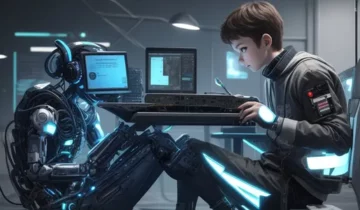
![What is AI in Manufacturing? [Explore 10 Use Cases]](https://platoaistream.net/wp-content/uploads/2023/08/what-is-ai-in-manufacturing-explore-10-use-cases-360x194.png)


